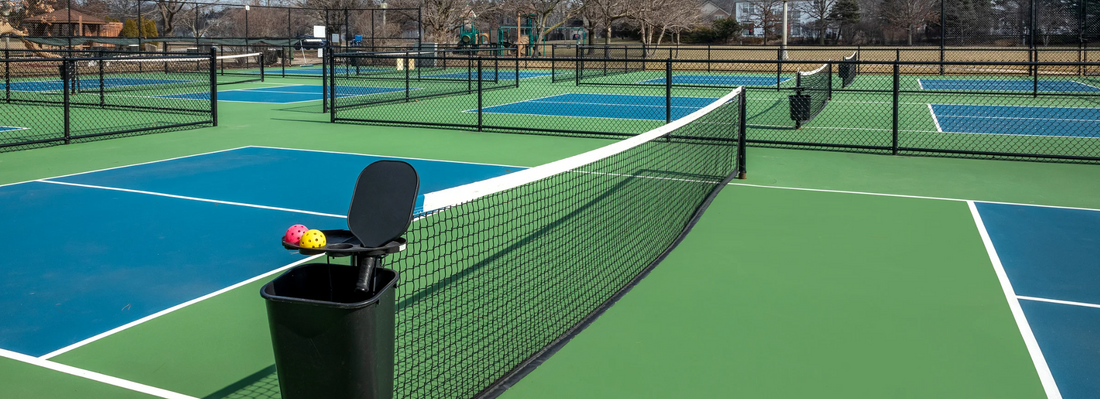
Eco-Friendly Court Design: How Sustainable Materials Are Greenlighting the Future of Play
Share
Pickleball is booming, and so is the demand for courts. Yet as new facilities spring up worldwide, a question arises: how can this growth align with environmental responsibility? The answer lies in eco-friendly court design. By weaving sustainability into construction and maintenance, communities are not only creating places to play but also charting a greener course for the sport’s future.
Rethinking the Foundations
Traditional court construction often relies on asphalt or concrete, materials with heavy carbon footprints. Eco-conscious projects are exploring alternatives that blend performance with sustainability.
- Recycled Asphalt Mixes: By incorporating repurposed materials, builders reduce waste while maintaining durability.
- Permeable Surfaces: Courts designed with porous paving allow rainwater to filter into the ground, lessening runoff and supporting groundwater replenishment.
- Bio-Based Sealants: Natural resins are replacing petroleum-based coatings, lowering emissions and extending surface life.
Such innovations prove that high-quality play surfaces need not come at the environment’s expense.
Sustainable Surroundings
A court is more than the playing surface. Its surroundings—from lighting to seating—play a pivotal role in environmental impact.
- LED Court Lighting: Energy-efficient systems slash electricity usage while offering consistent visibility for night play.
- Solar Integration: Panels installed nearby can offset energy demands, making facilities self-sufficient.
- Reclaimed Wood Seating: Benches and bleachers constructed from recycled timber reduce deforestation pressures while adding character to the venue.
These design touches transform courts into environmentally mindful community centers.
Water and Heat Management
Climate considerations make sustainability not just an option but a necessity.
- Rainwater Harvesting: Collected water is reused for landscaping, reducing strain on municipal systems.
- Cool Coatings: Reflective surface treatments lower court temperatures in hot climates, cutting down heat absorption and improving player comfort.
- Native Plant Landscaping: Choosing drought-resistant greenery around courts reduces irrigation needs while promoting biodiversity.
By addressing water and heat challenges, facilities prepare themselves for long-term resilience.
The Role of Recycled and Repurposed Materials
Repurposed rubber, plastics, and composites are finding their way into everything from net posts to padding. Even pickleball lines can be applied with low-VOC paints derived from natural pigments. These choices minimize pollutants and highlight how creativity and sustainability intersect.
Community and Economic Value
Eco-friendly courts are not just environmentally beneficial—they also yield lasting community and economic returns.
- Lower Operating Costs: Reduced energy and water usage leads to long-term savings.
- Positive Branding: Municipalities and clubs that embrace green practices position themselves as forward-thinking leaders.
- Enhanced Community Pride: Players appreciate facilities that align recreation with responsibility, deepening their sense of stewardship.
The marriage of sustainability and sport cultivates a culture of care both on and off the court.
Looking Ahead
As pickleball continues its ascent, eco-friendly design will shape the future of infrastructure. Expect to see more courts built with modular surfaces for easy recycling, hybrid indoor-outdoor layouts that maximize natural ventilation, and entire facilities powered by renewable energy. Sustainability is not a passing trend but a mandate for the next generation of players and builders.
Conclusion
Eco-friendly court design is redefining how communities approach pickleball’s growth. By choosing recycled materials, renewable energy, and water-wise landscaping, builders create courts that honor both the sport and the planet. In this movement, every serve and rally is played on a foundation of responsibility, ensuring that the joy of the game is matched by a commitment to a sustainable tomorrow.












